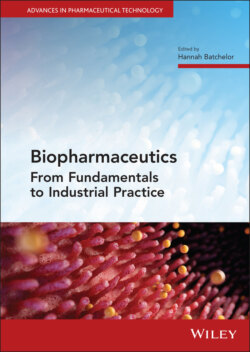Читать книгу Biopharmaceutics - Группа авторов - Страница 28
Box 2.3 Total body water.
Оглавление1 Plasma: ~3 L (~4% body weight)
2 Interstitial fluids: ~11 L (~16% body weight)
3 Extracellular fluids (ECF) ~20% body weight
4 Intracellular fluids: ~28 L (~40% body weight)
5 Total body water, ~42 L ~60% body weight
Based on an average 70 kg healthy male.
A drug with a very low volume of distribution may mean that the drug is mainly distributed to the extracellular fluids, like blood and/or interstitial fluids.
The rate and extent of drug distribution into the body tissues is an interplay between physicochemical properties of the drug (e.g., molecular weight, solubility, lipophilicity, ionisation constant and partition coefficient) and its interaction with biomolecules (e.g., ability to bind to the blood cells or the plasma proteins). The rate and extent of drug distribution to a particular organ or a tissue also depends on the blood flow. The heart pumps about five litres of blood every minute (the cardiac output) of which about 30% passes through the liver, ~25% to the kidneys and about 14% to the brain. The drug is usually distributed to the highly perfused organs first (such as brain, heart, lung, kidney and liver) before it is distributed to other tissues with poor blood flow (Figure 2.6). In pharmacokinetics, a very large volume of distribution suggests that the drug is distributed deeper down the body tissues, for instance, the muscles and the adipose tissue.
